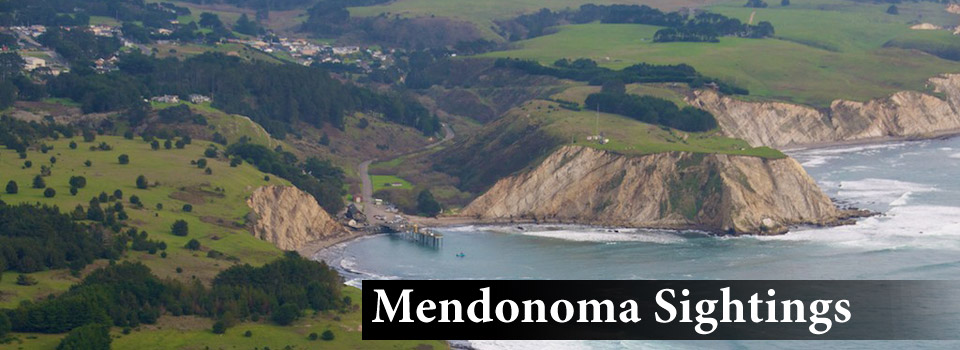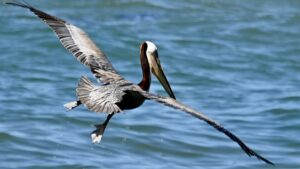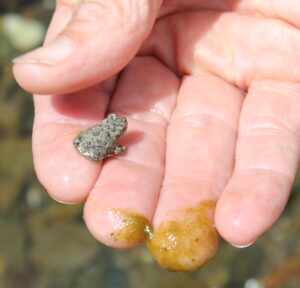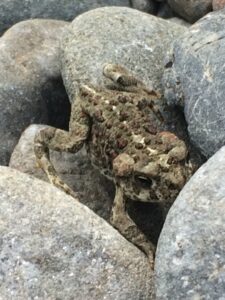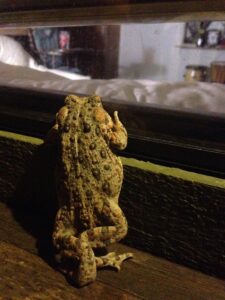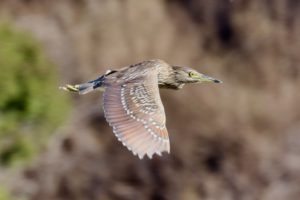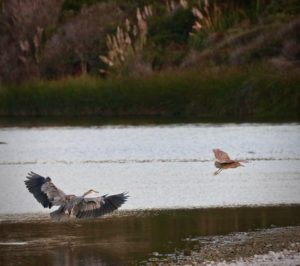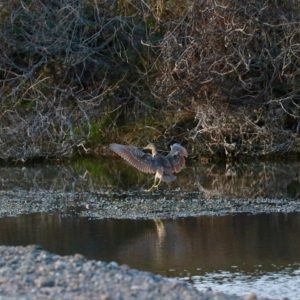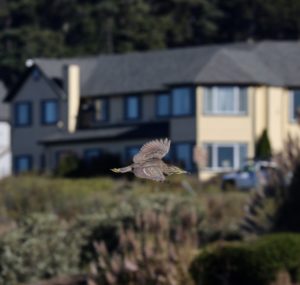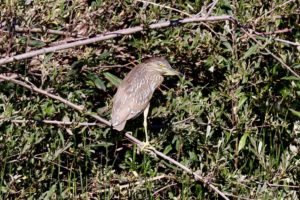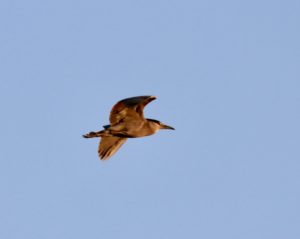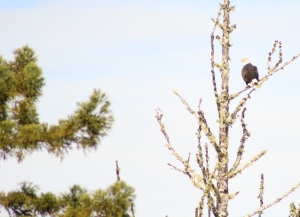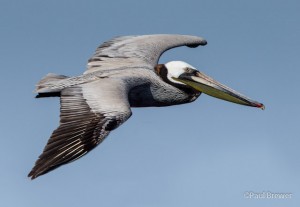Loch Michie photographed this adult Brown Pelican as it lifted off from the water.
Adult Brown Pelicans have white heads and brown tummies. Brown Pelicans are so graceful when flying, but they can be comically clumsy when coming in for a landing in water.
These prehistoric-looking birds were severely impacted by the pesticide DDT. It got in waterways where fish ingested it. Birds like the Brown Pelicans ate the fish, and the pesticide residue caused their eggshells to thin. When the mother bird stood (yes, Brown Pelicans incubate their eggs with the skin on their feet) on her eggs, they broke. Their numbers went into a steep decline and we almost lost them. DDT was banned, and these beautiful creatures have recovered in the years since. I think a good rule for we humans would be: Do No Harm.
Thanks to Loch for allowing me to share his photo with you here.
Fog over the Pacific Ocean, with warm temps away from the ocean.
